- November 21, 2021
- Posted by: Shane Daly
- Category: Trading Article
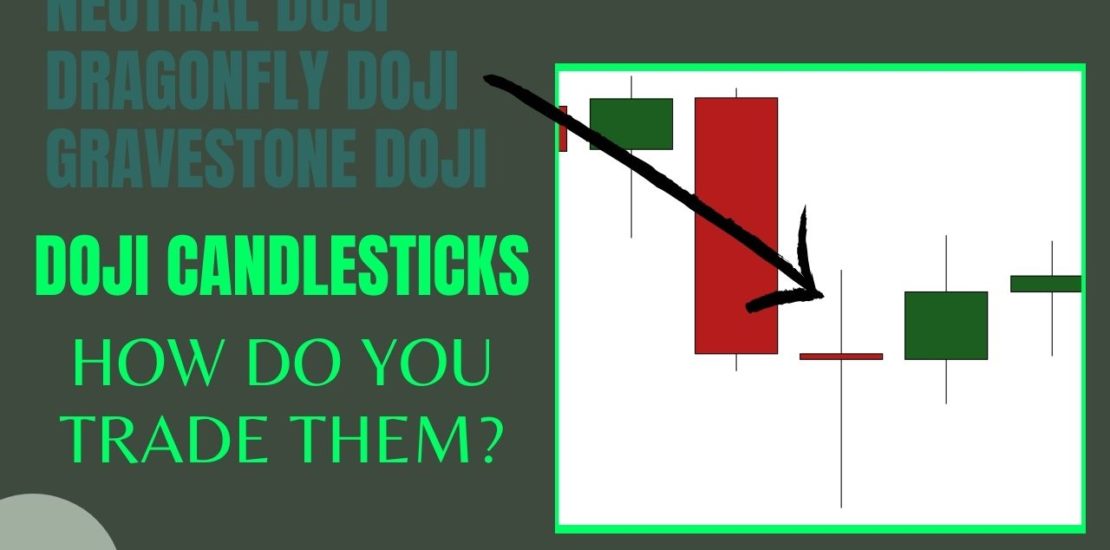
We can tell a lot about the state of the market by looking at individual candlesticks. Candles such as the engulfing candlestick or Marubozu, show a strong one sided battle between bulls and the bears.
Doji candlesticks are the opposite and are easy to spot on a candlestick chart.
There are different types of doji candlesticks:
- Ones that show a market in balance where neither the bulls or the bears are decisive winners. The open price and the close price are relatively equal.
- One that show that the bulls were overwhelmed
- The other one that shows that sellers were no match for the bulls
Does a trend reversal begin or will we see just a continuation of the current trend?
We don’t know.
We need to see some confirmation of one thing over another.
What A Doji Candle Pattern Tells You
Understanding what you are seeing with this doji candle is important.
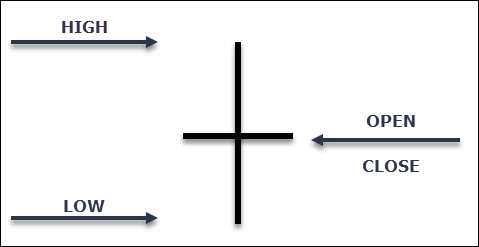
This is an idealized example as the open and close price were tight.
- We have an opening price and let’s assume price raced to the upside as shown by the upper shadow
- Buyers are in control (or shorts unloading positions). For part of this period, this candlestick would have been green (white)
- Price would hit a resistance level and either sellers step in or buyers unload their longs
- We thensee price put in a low for the period and find some type of price support in that zone as evident by the long lower shadow
The cycle repeats where buyers step in and bring price back to where we started and we get our closing price.
It is clear that no side won the period. This is why it is often called a “neutral doji”
In this example, the candle closes with the bears slightly in control. Note the long lower shadow and then the close being greater than the 50% level of the candle. It closed red but the bulls were fairly strong.
This candle is still considered a doji. Price is still showing indecision with no side having an obvious victory at the close.

Time Frame Matters
One thing to always remember is that when we are dealing with individual candlestick patterns, the time frames matters.
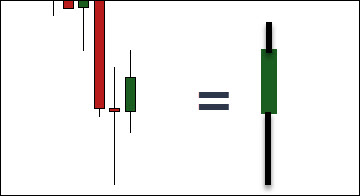
On one time frame, you would see the doji and the green candlestick the comes after it.
Changing to one time frame higher, you could see the candlestick on the right.
That candle has a much different meaning; bulls were strong enough to drive price from the low of the period and close strongly positive on the day.
Use Other Technical Factors
Location matters when looking at the standard doji candlestick. Where you find one can give you a clue as to what to expect going forward.
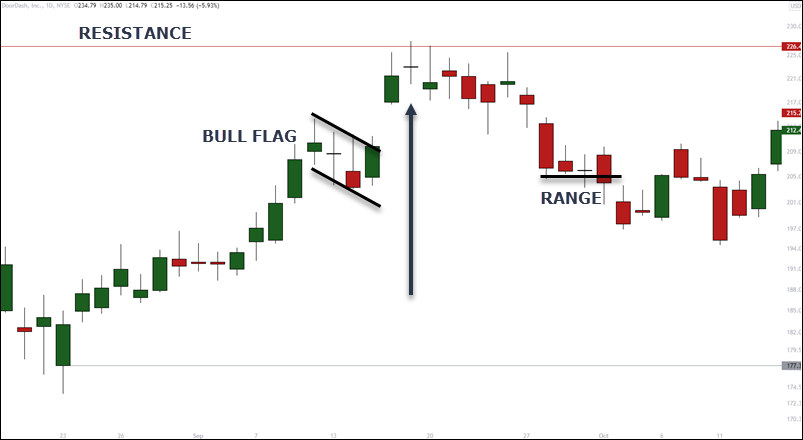
This is the daily stock chart of DASH. Price was in an uptrend and ran right into another test of a resistance level after a gap up.
Remember, the doji shows indecision on the part of market participants. The meaning becomes clear as a we get a reversal and price breaks down.
At the bull flag, the indecision candle was part of a continuation.
This is Home Depot.
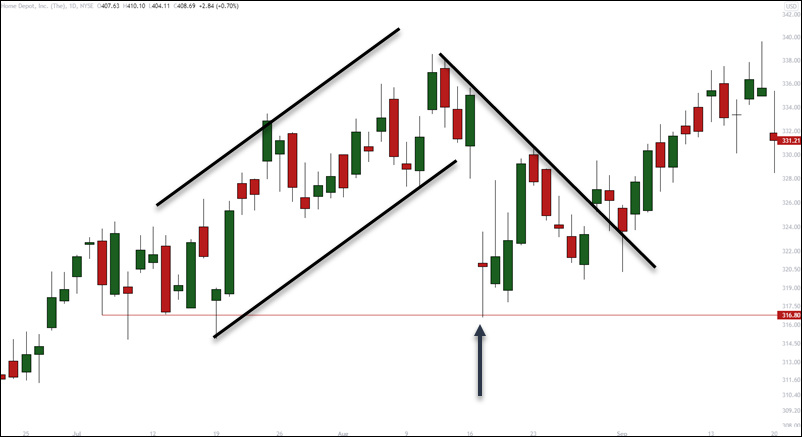
Price was climbing to all time highs before this pullback.
We see an obvious support level and the formation of a doji candle.
It acts as a reversal as HD heads off into new highs.
How Would You Trade A Doji Candlestick?
I have to remind you again that we are looking at indecision in the instrument. Understanding that, one use of the doji is to lighten up a position you currently hold or tighten the protective stop loss.
Using it in this way is more for information as opposed to a direct trade from it.
We could also look for a reversal back in the direction of the current trend after some type of consolidation – including bull flags and bear flags.

This is the one hour chart of AMD. Price is in an uptrend as defined by the 20 period moving average.
A bull flag starts to form as participants are not weighted on one side. One more candle down and price reverses.
Traders can use a break of the high of the doji as a price reversal trigger back into the uptrend.
How Do I Use It?
I use these types of candlestick for trade triggers the same as I do with the break of an inside bar.
When these candles break, we are seeing short term momentum in that direction. I prefer focusing on the overall trend and do not trade these without some other technical analysis of the chart.
Types Of Doji Candlesticks
The doji comes in a few different shapes and each has its own name:
- Gravestone doji
- Dragonfly doji
There are a few other variations but these two including the main one we talked about, encompass all you need to know. It is the concept of each that you must understand.
Gravestone Doji
The name is fitting as it shows the bulls, are literally dead as the period closes. I actually refer to this as a shooting star since it is handled pretty much the same.
The GD is found in an uptrend (or in a corrective rally) and tells a fairly extreme story.
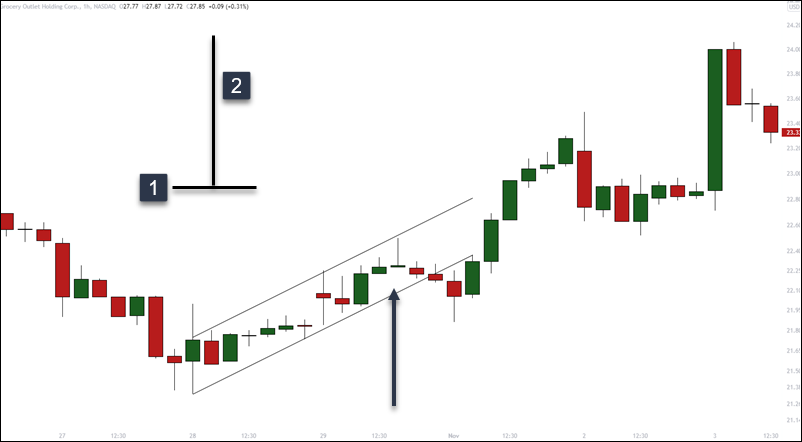
One hour time frame of GO. Market is coming off of lows and we have an obvious trend channel.
The gravestone doji shows up at the resistance line of the channel and we get a brief pullback.
How do we know it is the gravestone?
- Little no no body – open and close are virtually identical
- Long upper wick
This example, we get two types of doji candles.
A. Our neutral doji
B. Gravestone doji

I chose this example because price was coming off a downtrend and it is not a textbook setup. Price rallied taking out a trend line and swing pivot. This is how an uptrend would start.
We get an inside doji and the gravestone shows where buyers attempted to continue the advance upwards.
By the end of the period, buyers were no where to be found and a bearish reversal is complete.
Key Point
You may not find the gravestone in the perfect location. In the last example, the gravestone actually showed up after the initial reversal.
Once the low broke of the gravestone doji, it confirmed the reversal. It was a confirmation candle. A short position dropped 188 pips once price broke the GD downside.
Dragonfly Doji
This is the exact opposite of the gravestone as a bullish candle.
Price is in a downtrend or in a correction and the Dragonfly doji shows up with a long lower shadow.
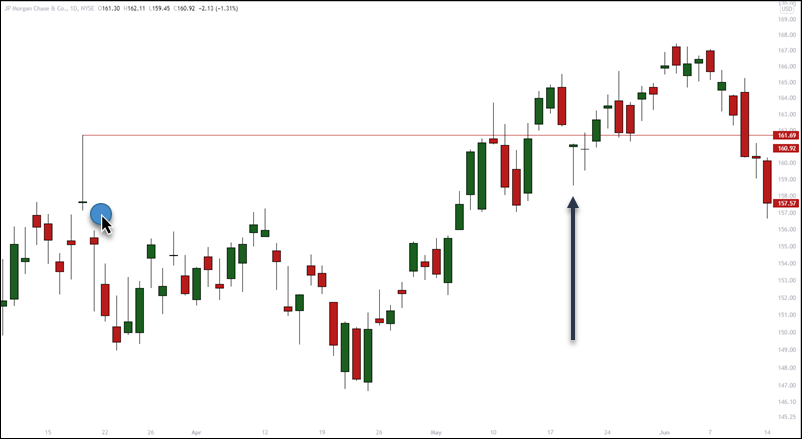
Great chart of JP Morgan. At the black arrow, price had gapped down after a momentum push to the upside. That is actually more bearish than bullish over a large sample of trades.
The dragonfly doji steps up at a former resistance level that is actually extremely close to a gravestone doji (blue circle). While not closing right at the lows, it had the same result acting as a bearish reversal. This is why I never show “perfect” anything in these posts. Close, is close enough.
Entry And Exits
Once you find one of the variations at a support or resistance zone and you decide to trade it, how do you actually enter and exit?
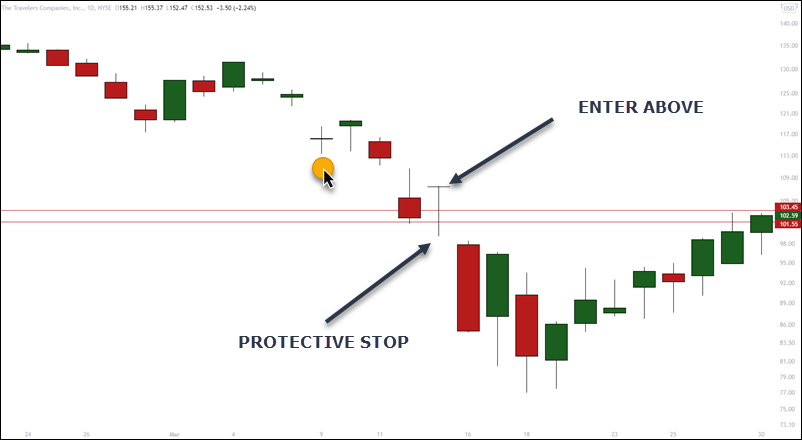
On this chart, we have a neutral doji with the orange dot. It does show up, although not marked, at a former swing pivot off to the left. A brief bounce, and reversal.
Our dragonfly doji shows up in the downtrend and at former support zones.
Your order to buy would be above the high.
Protective stop below the low.
Pretty simple.
Wrapping Up
Let’s go over some of the standard questions:
Are all doji candles indecision?
No. The dragonfly is considered to be bullish. The gravestone is considered bearish. The only true indecision would be the neutral doji.
Can you trade it as a standalone technique?
You can do anything however it is not something I would do. Perhaps consider using technical indicators that include trend and momentum indicators. You could consider trading the failure of a dragonfly or gravestone.
If a gravestone appears but then the next candle breaks the high, it is obvious that bulls are back in charge. Consider looking for a long continuation trade entry.
I use them as entry signals after pullbacks as price reverses back into the trend direction.
How common are these candlesticks?
These are not candlesticks you will find too often. They are fairly rare especially if looking for them at proper market structure points.
